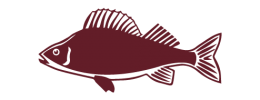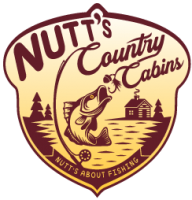Questions? Call 1-844-905-1001
Yellow Perch

The Yellow Perch (Perca Flavescens) goes by a variety of names such as: Lake Perch, American Perch, Ringed Perch, Striped Perch, Coon Perch, Jack Perch, Coontail, Raccoon Perch and Dodd fish but commonly referred to as Perch.
The Yellow Perch is a freshwater fish and a member of the Percidae fish family. They are widespread species in the much of North America and Canada. The yellow perch is often recognized by it’s striking characteristic by its 6 to 8 dark vertical bands that fade as they approach the belly against a gold or yellow coloured background. Its body is oval and oblonged shape with laterally compressed body. The anal fins are a green or yellow-orange and the dorsal fin is an olive-green colour with the belly being cream coloured. In many populations, Yellow Perch often live 9-10 yrs with the average adult generally ranging from 10 to 25 cm (4 to 10 inches) in length, weighting an average of 0.08 - 0.17 kgs (0.18 – 0.38 lbs). The largest yellow perch was caught in 1865 in New Jersey with a length of 18” (46 cm) and weighting 4 lbs 3 oz (1.9 kgs) and is the longest standing record for freshwater fish in North America according The International Game Fish Association (IGFA). The Ontario record for Yellow Perch is 1.1 kg (2.4 lbs). In the northern waters, Perch tend to live longer and grow at a slower rate. Females in general are larger, grow faster, live longer and mature in 3-4 years compared to males, which mature in 2-3 years at a smaller size. Perch do not grow as large in the northern waters but tend to live longer. Primarily, age and body size determine the diets of yellow perch. Zooplankton is the primary food source for young and larval perch. By age one, they shift to macroinvertebrates, such as midges and mosquitos. Large adult Perch feed on invertebrates, fish eggs, crayfish, mysid shrimp, and juvenile fish. They have been known to be predominantly piscivorous and even cannibalistic in some cases. About 20% of the diet of a yellow perch over 32 g (1.1 oz) in weight consists of small fish. Maximum feeding occurs just before dark, with typical consumption averaging 1.4% of their body weight
Their microhabitat is usually along the shore among reeds and aquatic weeds, docks, and other structures. They are most dense within aquatic vegetation, since they naturally school, but also prefer small, weed-filled water bodies with muck, gravel, or sand bottoms. They are less abundant in deep and clear open water or unproductive lakes. Within rivers, they only frequent pools, slack water, and moderately vegetated habitat. They frequent inshore surface waters during the summer.
Yellow perch spawn once a year in spring using large schools and shallow areas of a lake or low-current tributary streams. They do not build a redd or nest. Spawning typically takes place at night or in the early morning. Females have the potential to spawn up to eight times in their lifetimes. Yellow perch eggs are thought to contain a chemical in the jelly-like sheath that protects the eggs and makes them undesirable since they are rarely ever eaten by other fish. The eggs usually hatch in 8-10 days but can take up to 21 days depending on temperature and proper spawning habitat. Yellow perch do not travel far during the year but move into deeper water during winter and
return to shallow water in spring to spawn. Spawning occurs in the spring when water temperatures are between 6.7 and 12.8°C. Growth of fry is initiated at 6–10°C, but is inactive below 5.3°C.
Almost every cool to warm water predatory fish species, such as Northern Pike, Muskellunge, Bass, Sunfish, Crappie, Walleye, Trout, and even other Yellow Perch, are predators of the Yellow Perch. They are the primary prey for Walleye, and they consume 58% of the age zero and 47% of the age one Yellow Perch in northern lakes.
Yellow Perch are an extremely important food source for birds. Cormorants specifically target yellow perch as primary prey. Other birds also prey on them, such as Eagles, Herring Gulls, Hawks, Diving Ducks, Kingfishers, Herons, Mergansers, Loons and White Pelicans. Cormorants feed heavily on yellow perch in early spring, but over the entire season, only 10% of their diets is Perch.
They provide fast action and can be caught all year long. It devours almost any natural bait and many types of artificial and is an active feeder in the winter when it is caught while ice fishing. It’s one of the most abundant and well-known pan-fish.
The voracious feeding habits of yellow perch make them easy to catch when schools are located, and they are frequently caught by recreational anglers targeting other species. Perch at times attack lures normally used for bass such a 3" tubes, Rapala minnows, and larger curl tail grubs on jig heads, and small, brightly colored casting spoons, but the simplest way to catch them is to use light line, 4 to 8 pound test and light, unpainted jig heads, 1/32–1/16 oz. Too many small soft plastic lure designs to mention can catch all panfish, but minnow-shaped lures with a quivering tail work much of the time, so long as the retrieval speed is slow and the lure is fished at the depth the perch are swimming. Thin, straight-tail grubs require the slowest speed of retrieval and are preferred when the bite is slow, which is much of the time.
Some good baits for Perch include worms, live and dead minnows, small freshwater clams, crickets, and any small lure resembling any of these. Larger Perch are often caught on large live minnow on a jig head, especially when fished over weed beds. Bobbers, if used, should be spindle type for the least resistance when the bait is struck, but small, round bobbers work well, too, yet indicate any slight pull of the bait. Raising the rod top is usually more than enough force to set the hook.
Wind: 13mph WSW
Humidity: 64%
Pressure: 29.72"Hg
UV index: 0
64°F / 43°F
46°F / 34°F
Nutt's Country Cabins, 2076 Highway 664, Sioux Lookout, ON P8T 0A7
Copyright © 2019 NuttsCountryCabins.com | Privacy Policy | Website design by: Little Dragon Media

